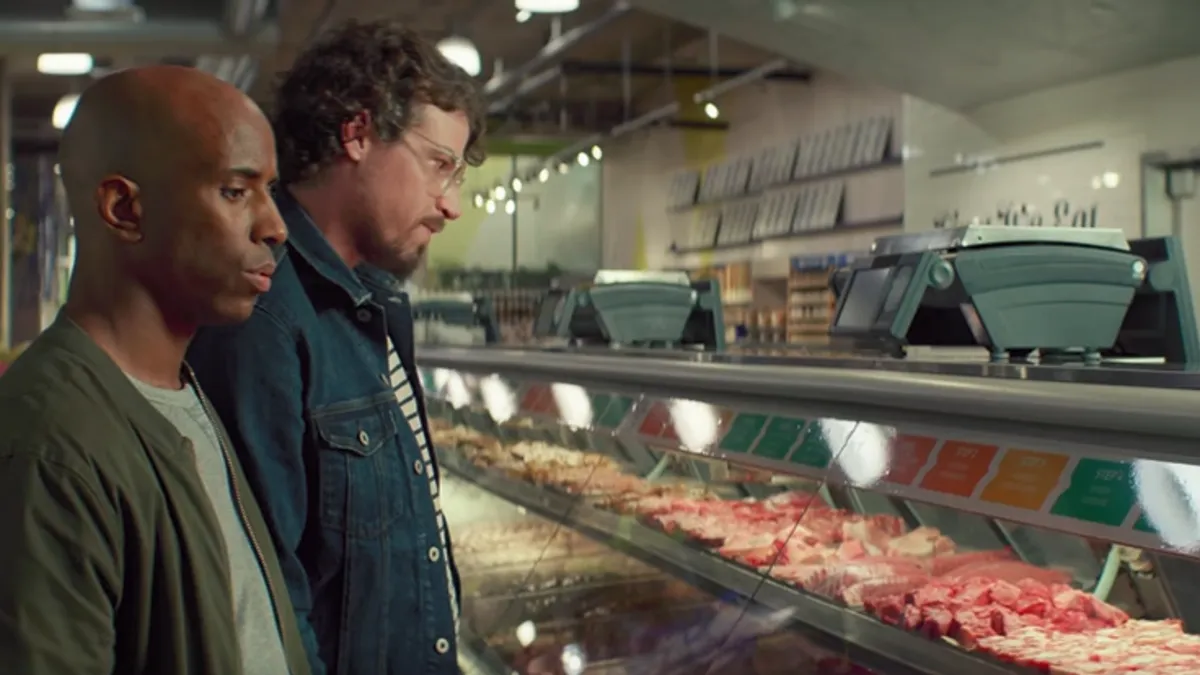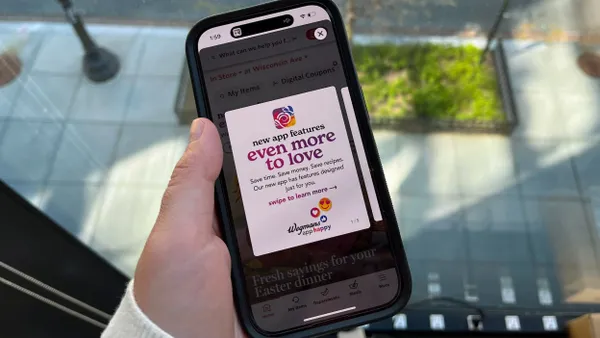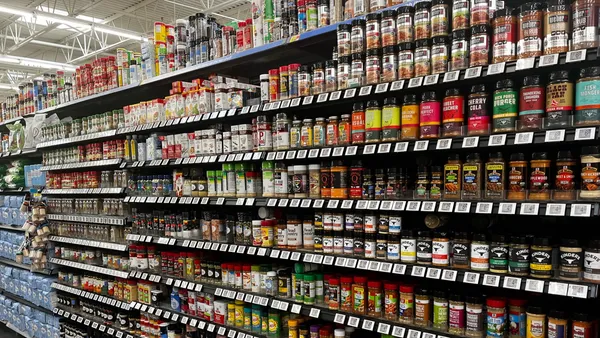Many of our readers saw the news earlier this week that Kroger named DDB New York its first-ever advertising agency of record. What they might not have seen was Kroger’s turn in a recent Funny or Die sketch starring Jeff Goldblum.
In the 12-minute bit, the "Jurassic Park" star and irrepressible oddball goes shopping at a local Kroger for everything he needs to make kabobs. Goldblum peruses the store, engaging in a few awkward interactions with employees. He sniffs the cologne of a meat department worker and whispers into the ear of a produce manager. He educates viewers on how to say "cotton candy" in French.
Whether you think this is funny or not is beside the point (I, for one, couldn't stop chuckling). The video is part of a series Kroger commissioned last year called "Cooking With Jeff" that aims to reach young viewers in the same ways that brands like Old Spice, Dos Equis and State Farm have — with calculated quirk. The first video in the series, a spot starring Goldblum along with food writer Jonathan Gold, garnered more than 1 million viewers in its first 24 hours.
There's a bigger push behind Kroger letting a lanky actor run amok in its stores and naming a new agency, though. It's all part of an effort to stand out amid a "sea of sameness," as the retailer put it in its DDB announcement.
I like that phrase "sea of sameness," and I like to think about it not in terms of a sameness in offerings across grocery, but rather a sameness in messaging. Retailers, after all, love to talk to their shoppers about convenience, value and giving them just what they want. How many ads out there depict a mom walking the aisles with her kids, smiling as she pulls down a box of cereal or nodding approvingly as she examines a jar of pasta sauce?
This sort of marketing centers on compelling strengths that cut to the heart of why people shop where they shop. But these days, telling customers you're convenient and that you love them isn't doing much to keep them from getting Chipotle delivered to their door or visiting Walmart's free grocery pickup.
Retailers have to change up their marketing tactics and broadcast a unique image that's authentic and that shows customers what they do best. Some already are. BJ's Wholesale Club, Whole Foods, Raley's and Meijer have all recently debuted TV and digital ads. Whole Foods' spots focus on humorous, very human interactions that happen at the store. Meijer's snappy new series centers on department employees giving the reasons why shoppers visit their stores.
Turning the typical ad script on its head, BJ's latest ad features a character named Frank standing outside a club store telling customers not to shop there. In giving them reasons not to visit, of course, he highlights all the benefits of shopping there.
This spring, Smart & Final debuted a multimedia ad campaign where customers gave all the different reasons why they visit the warehouse club. In interview clips filmed inside the produce department at a Long Beach, California store, they talk up the fresh produce, the ability to buy bulk as well as individual sizes and the value they get shopping there.
I recently spoke with Greg Ahearn, president and chief strategy officer with ad firm Davis Elen, which developed the Smart & Final campaign. He said the retailer, which was recently re-acquired by Apollo Global Management, wanted to make a more emotional connection with its customers. That's not easy to do when you're a club store that serves two distinct sets of customers — household and business — but Ahearn said his firm found its platform in simply talking to customers about why they shop there.
"Smart & Final is different things for different people, and we thought, 'let’s lean into that by allowing those consumers to be the face of the brand,'" he said. "Let them talk about the brand and how it meets needs in their lives, and not project it onto them."
Ahearn said it was important that Smart & Final's personality as a fun, flexible place to shop really shine through in the spots, which include TV, radio and digital media.
"Give it a unique personality and make it more engaging and have an emotional hook for the customer, but allow for value and pricing and for retail to be retail as well," he said.
The nature of grocery shopping is changing as more consumers buy online and interact with brands through their phones and computers. This makes it challenging to develop a unified message that conveys the benefits of both digital and in-store shopping. But it also offers an opportunity to carve out a unique retailing personality.
How will grocers convey seamless shopping across platforms? How might they turn their evolving consumers and operational strategy into a messaging strength? You can bet Kroger is thinking hard about the answers to these questions. As much as they'd like Jeff Goldblum to whisper the answers in their ear, they know that's not going to happen.





















